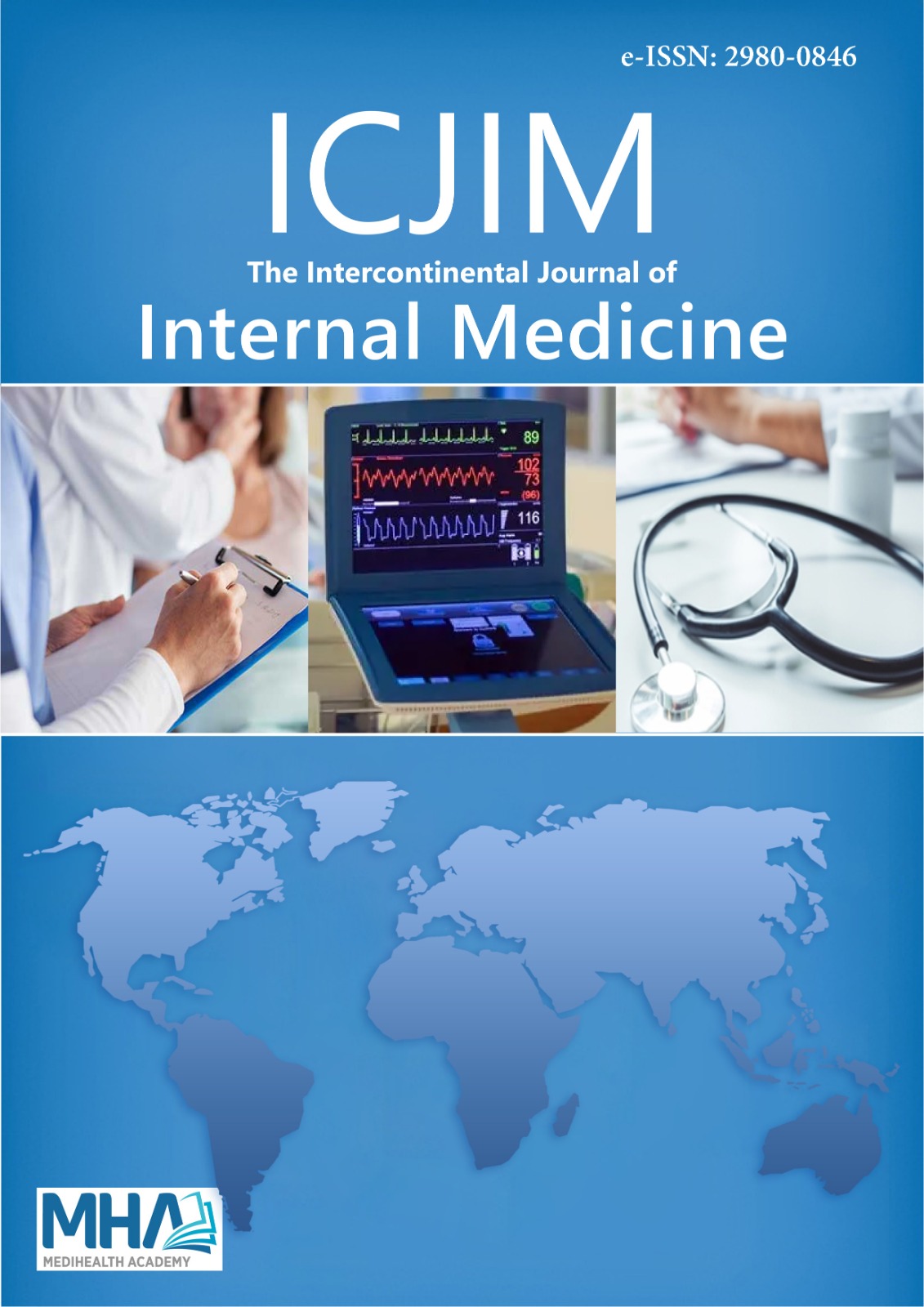1. McLachlan S, Collaboration NRF. Trends in adult body mass index in 200 countries since 1975: pooled analysis of 1,698 population-based measurement studies with 19.2 million participants. <em>Lancet</em>. 2016;387(10032):1998.
2. Furukawa S, Fujita T, Shimabukuro M, et al. Increased oxidative stress in obesity and its impact on metabolic syndrome. <em>J Clin Investigat</em>. 2017;114(12):1752-1761.
3. Erel O, Neselioglu S. A novel and automated assay for thiol/disulphide homeostasis. <em>Clin Biochem</em>. 2014;47(18):326-332. doi:10.1016/j.clinbiochem.2014.09.026
4. Rodríguez-Hernández H, Simental-Mendía LE, Rodríguez-Ramírez G, Reyes-Romero MA. Obesity and inflammation: epidemiology, risk factors, and markers of inflammation. <em>Int J Endocrinol</em>. 2013;2013:678159. doi:10.1155/2013/678159
5. Das UN. Is obesity an inflammatory condition? <em>Nutrition</em>. 2001;17(11-12):953-966. doi:10.1016/s0899-9007(01)00672-4
6. King GL. The role of inflammatory cytokines in diabetes and its complications. <em>J Periodontol</em>. 2008;79(8 Suppl):1527-1534. doi:10.1902/jop.2008.080246
7. Aouacheri O, Saka S, Krim M, Messaadia A, Maidi I. The investigation of the oxidative stress-related parameters in type2 diabetes mellitus. <em>Can J Diabetes</em>. 2015;39(1):44-49. doi:10.1016/j.jcjd.2014.03.002
8. Syafiq WM, Dwipayana IMP, Saraswati MR, Gotera W. Correlation between waist circumference and glycated haemoglobin (HbA1c) among type 2 diabetes mellitus patients in Diabetic Polyclinic Sanglah General Hospital Denpasar-Indonesia. <em>Neurol Spin Med Chirurg</em>. 2020;3(2):66-70.
9. Wei N, Zheng H, Nathan DM. Empirically establishing blood glucose targets to achieve HbA1c goals. <em>Diabetes Care</em>. 2014;37(4):1048-1051.
10. Kahn BB, Flier JS. Obesity and insulin resistance. <em>J Clin Investigat</em>. 2000;106(4):473-481.
11. Jankovic A, Korac A, Srdic-Galic B, et al. Differences in the redox status of human visceral and subcutaneous adipose tissues--relationships to obesity and metabolic risk. <em>Metabolism</em>. 2014;63(5):661-671. doi:10.1016/j.metabol.2014.01.009
12. Stevens J, Couper D, Pankow J, et al. Sensitivity and specificity of anthropometrics for the prediction of diabetes in a biracial cohort. <em>Obes Res</em>. 2001;9(11):696-705. doi:10.1038/oby.2001.94
13. Kulak E, Berber B, Temel H, et al. Determination of type 2 diabetes risk levels in individuals applying to family medicine. <em>Turk J Family Pract</em>. 2019;23(1):20-30. doi:10.15511/tahd.19.00120
14. Haghighatdoost F, Amini M, Feizi A, Iraj B. Are body mass index and waist circumference significant predictors of diabetes and prediabetes risk: results from a population based cohort study. <em>World J Diabetes</em>. 2017;8(7):365-373. doi:10.4239/wjd.v8.i7.365
15. Deneke SM. Thiol-based antioxidants. <em>Curr Top Cell Regul</em>. 2001;36:151-180.
16. Erel Ö, Erdoğan S. Thiol-disulfide homeostasis: an integrated approach with biochemical and clinical aspects. <em>Turk J Med Sci</em>. 2020;50(10):1728-1738.
17. Ates I, Kaplan M, Inan B, et al. How does thiol/disulfide homeostasis change in prediabetic patients? <em>Diabet Res Clin Pract</em>. 2015;110(2):166-171.
18. Ates I, Kaplan M, Yuksel M, et al. Determination of thiol/disulphide homeostasis in type 1 diabetes mellitus and the factors associated with thiol oxidation. <em>Endocrine</em>. 2016;51:47-51.
19. Eryilmaz MA, Kozanhan B, Solak I, Çetinkaya ÇD, Neselioglu S, Erel Ö. Thiol-disulfide homeostasis in breast cancer patients. <em>J Cancer Res Therapeut</em>. 2019;15(5):1062-1066.
20. Schillern EE, Pasch A, Feelisch M, et al. Serum free thiols in type 2 diabetes mellitus: A prospective study. <em>J Clin Translat Endocrinol</em>. 2019;16:100182.
21. Wong S, Kirkland JL, Schwanz HA, et al. Effects of thiol antioxidant β-mercaptoethanol on diet-induced obese mice. <em>Life Sci</em>. 2014;107(1-2):32-41.
22. Hildebrandt W, Hamann A, Krakowski-Roosen H, et al. Effect of thiol antioxidant on body fat and insulin reactivity. <em>J Mol Med (Berl)</em>. 2004;82(5):336-44. doi:10.1007/s00109-004-0532-5
23. Koh EH, Lee WJ, Lee SA, et al. Effects of alpha-lipoic Acid on body weight in obese subjects. <em>Am J Med</em>. 2011;124(1):1-8. doi:10.1016/j.amjmed.2010.08.005
24. Ansar H, Mazloom Z, Kazemi F, Hejazi N. Effect of alpha-lipoic acid on blood glucose, insulin resistance and glutathione peroxidase of type 2 diabetic patients. <em>Saudi Med J</em>. 2011;32(6):584-588.
25. Rosc D, Adamczyk P, Boinska J, et al. CRP, but not TNF-α or IL-6, decreases after weight loss in patients with morbid obesity exposed to intensive weight reduction and balneological treatment. <em>J Zhejiang Univ Sci B</em>. 2015;16(5):404-411. doi:10.1631/jzus.B1400219
26. Kim TN. Barriers to obesity management: patient and physician factors. <em>J Obes Metab Syndr</em>. 2020;29(4):244-247.
27. Mauro M, Taylor V, Wharton S, Sharma AM. Barriers to obesity treatment. <em>Eur J Int Med</em>. 2008;19(3):173-180.
28. Leyden E, Hanson P, Halder L, et al. Older age does not influence the success of weight loss through the implementation of lifestyle modification. <em>Clin Endocrinol</em>. 2021;94(2):204-209.
29. Finucane FM, Gibson I, Hughes R, et al. Factors associated with weight loss and health gains in a structured lifestyle modification programme for adults with severe obesity: a prospective cohort study. <em>Front Endocrinol</em>. 2023;14:1257061.
30. Chopra S, Malhotra A, Ranjan P, et al. Predictors of successful weight loss outcomes amongst individuals with obesity undergoing lifestyle interventions: a systematic review. <em>Obesity Reviews</em>. 2021;22(3):e13148.
31. Cresci B, Castellini G, Pala L, et al. Fit and motivated: outcome predictors in patients starting a program for lifestyle change. <em>Obesity Facts</em>. 2013;6(3):279-287.
32. Sawamoto R, Nozaki T, Nishihara T, et al. Predictors of successful long-term weight loss maintenance: a two-year follow-up. <em>BioPsychoSocial Med</em>. 2017;11:1-10.

